
by Kaye Dee
I’m fascinated by supersonic aircraft design, so the end of September gave me plenty to get excited about with the first test flights of some of the West’s most advanced military aircraft. On September 21 in the US, the North American Aviation XB-70 Valkyrie flew for the first time. This prototype has to be one of the most gorgeous aircraft ever designed: with its delta wing and needle nose, it looks like it has flown off the cover of a science fiction magazine! It reminds me a lot of the prototype designs for the Anglo-French Concorde on which the British aircraft industry is pinning its hopes for future aviation industry dominance.
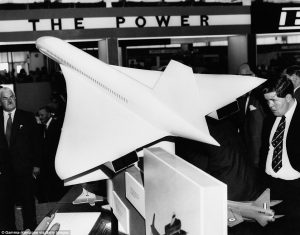
A model of the Concorde prototype design at the Farnborough Airshow in 1962. Delta wings are clearly in fashion for supersonic aircraft
XB-70: Floating on Air
The Valkyrie was designed to be a high-altitude Mach 3 strategic bomber, although the operational B-70 version was cancelled back in 1961 and the aircraft will now be used to test new supersonic aviation technologies. One of the heaviest aircraft in the world, according to Flight magazine, the XB-70 is constructed mostly of stainless steel, sandwiched honeycomb panels, and titanium. Like the Concorde, the Valkyrie boasts a droop-snoot, or lowerable nose, that allows the pilots to view the ground during its nose-high take-off and landing.
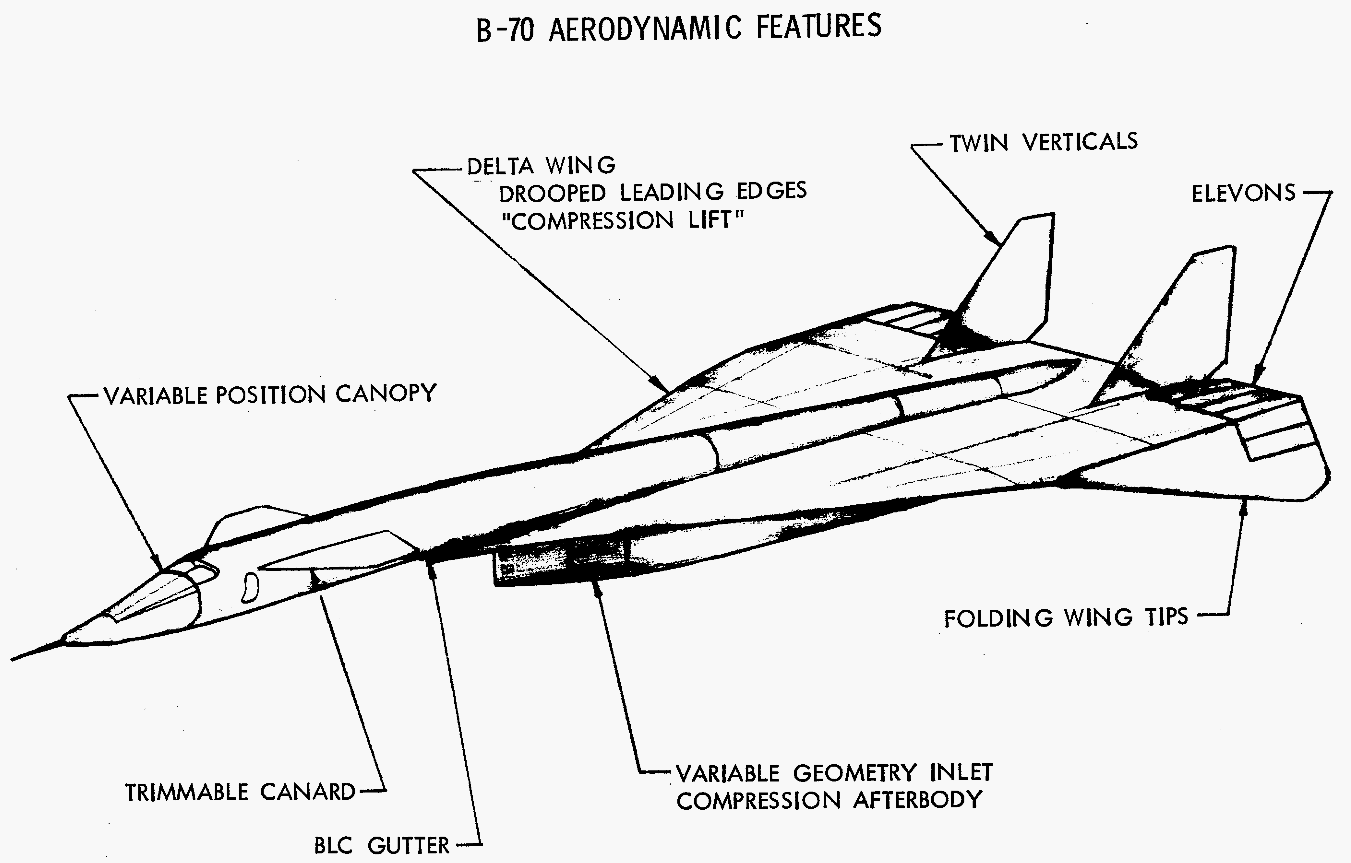
The final design drawing for the B-70 bomber, for which the Valkyrie was intended to be the prototype
What I find particularly interesting about the XB-70 is that it uses the technique of compression lift to improve the overall lift of the aircraft and increase its directional stability at supersonic speeds. Only discovered in the 1950s, the compression lift effect is generated by a shock wave that is created when air strikes the sharp leading edge of the central engine air intake splitter plate below the wing, behind which are six General Electric YJ93-GE-3 turbojet engines. This effect is strengthened by the downward folding wingtips that help to trap the shock wave under the wings. Yes, the XB-70 actually has hinged wingtips that tilt down as far as 65 degrees!

The XB-70 Valkyrie ready for its first test flight. Note the hinged wingtips are in the horizontal position for take-off
The Valkyrie’s maiden test flight saw it hop between the manufacturing facility at Palmdale, in California, and Edwards Air Force Base. It wasn’t all smooth sailing, though, as one engine had to be shut down shortly after take-off and an undercarriage malfunction warning meant that the flight was flown with the undercarriage down as a precaution. This limited the flight to a speed of 390 mph, which was about half of what had been planned and only a fraction of the XB-70’s 2,000mph maximum speed. Additionally, during landing the rear wheels of the port side main gear locked, causing two tyres to rupture and start a fire. Despite these teething problems I’m looking forward to future test flights of this amazing aircraft—the next one is due in a couple of weeks, so maybe I’ll write more about it next month.
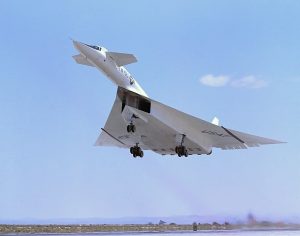
As the Valkyrie lifts off we get a good view of the air intake splitter that generates the shockwave for the compression lift effect. Its six engines are housed behind the air intake
TSR-2: A Cross Between a Bomber and a Missile
Oddly enough, while Britain’s latest RAF prototype is also delta-winged and powered by two Olympus 320 engines, similar to those that will be used on the Concorde, it resembles the Concorde far less than the Valkyrie, though it still looks sleek and deadly! The TSR-2—the name is derived from its role as a “tactical strike and reconnaissance” bomber— took to the skies for a 15-minute test flight on September 27 at the Ministry of Aviation's Aeroplane and Armament Experimental Establishment at Boscombe Down. The test flight looked to be quite successful, though I’ve heard on the WRE grapevine that the aircraft actually had many problems and was only marginally ready for a test flight.

TSR-2 undergoing an engine test before its first flight. The aircraft was painted 'anti-flash white' to reflect some of the thermal radiation from a nuclear explosion and protect it and the crew
Developed by the British Aircraft Corporation (BAC), the TSR-2 is designed to make its attack run at ground-level, under the control of terrain-following radar. It’s a ‘short take-off and landing’ vehicle that can carry conventional or nuclear weapons and is capable of flying above Mach 2 at 40,000 ft or around Mach 1 during low-level bombing runs. This versatility places the aircraft at the intersection of the capabilities of the manned bomber and the long-range missile. The TSR-2 is similar to the Valkyrie in that it has downturned wingtips, fixed at an angle of 30 degrees, to enhance its stability in high speed flight. However, as its test flight showed, those wing tips generate trailing white vortices, which might make the TSR-2 less than inconspicuous during an attack run!

On a ground attack run, the TSR-2 will be advertising its position with its smoking exhaust and white wing vortices
The TSR-2’s development has been fraught with controversy and more than once threatened with cancellation. Some commentators are calling this test flight the current British Government’s last political act before the upcoming elections in Britain, and I guess only the future will tell whether the TSR-2 goes on to become operational, or whether the next Government will finally cancel the plane and buy a replacement from America instead.

The YF-12A at Edwards Air Force Base before its first public test flight
YF-12A: Fast, Powerful and Just a Bit Mysterious
Another US Air Force prototype has been the most recent test flight to catch my attention, with the Lockheed YF-12A unveiled to the world at a press conference at Edwards Air Force Base on September 30. Claimed to be "the world's fastest military aircraft" (though perhaps the XB-70 would beg to differ), the YF-12A is a prototype interceptor capable of reaching 2,000 miles per hour and an altitude of over 80,000 feet. With its long, sleek fuselage and huge engine nacelles mounted on either side of the body (carrying the two Pratt & Whitney J58 turbojets that power it), the YF-12A is another design that looks like something out of a science fiction film, but it certainly conveys an impression of high speed and I suspect it will be setting new speed and altitude records before too long.

The pressure suits worn by the YF-12A crew don't look much different from an astronaut's spacesuit. It really helps to show how high this bird can fly!
Made mostly of titanium, to handle the heat generated by its high speeds, the YF-12 is painted dead black, to help radiate the heat from its skin. It carries a crew of two: a pilot and a fire control officer, to operate the air-to-air missile system, which includes a powerful radar and four Hughes AIM-47A Falcon air-to-air missiles carried in chine bays within the fuselage. Unlike the Valkyrie and the TSR-2, it uses a skid landing system, rather than a more conventional undercarriage. There isn’t a lot of detail available yet about the YF-12A, and rumour has it that it is the ‘public version’ of an aircraft that is still top secret, but I certainly hope to see more of it in the future.
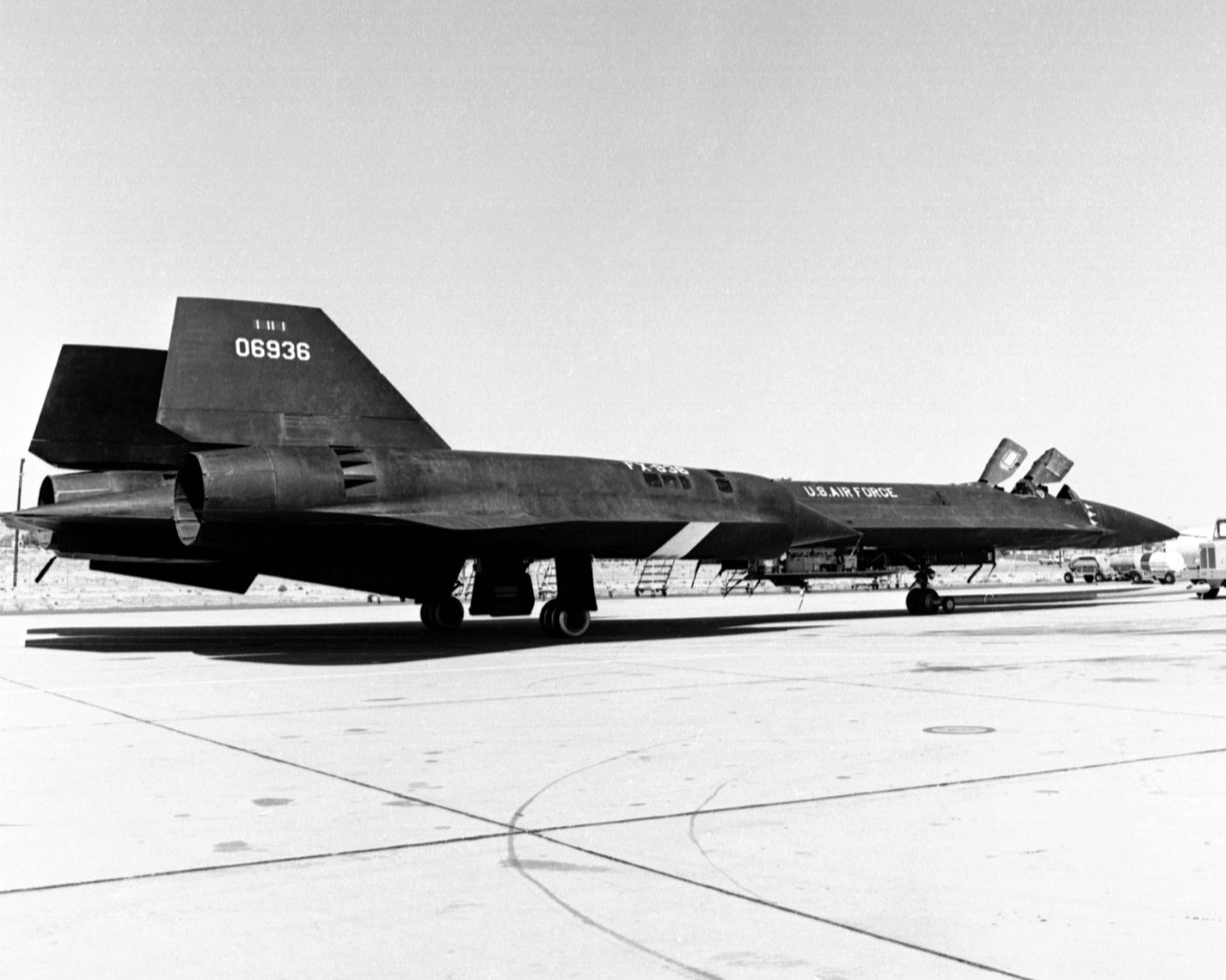
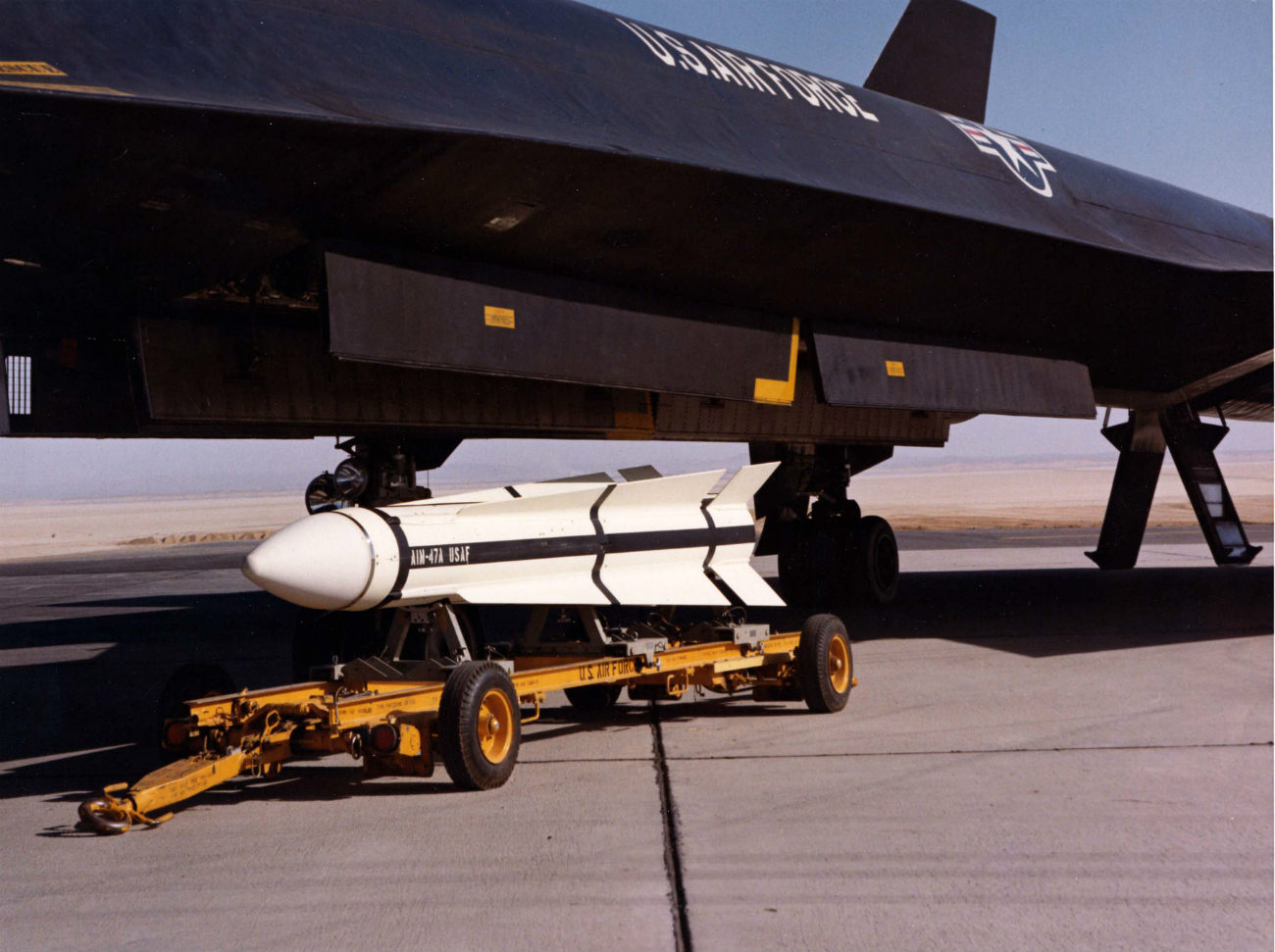
(Top) A view of the YF-12A showing the twin crew positions (Bottom) The AIM-47 air-to-air missile that forms the YF-12's armament
[Join us at Portal 55, Galactic Journey's real-time lounge! Talk about your favorite SFF, chat with the Traveler and co., relax, sit a spell…]



Thank you for a very informative article. These aircraft are amazing. I imagine they cost millions of dollars, too. My big question is: When do I get to make my hour-long flight across the ocean?
Yes, prototypes like these cost many millions of dollars/pounds. I've heard that the cost of a single Valkyrie is around $700 million dollars!! I look forward to supersonic aircraft cutting the travel time between Australia and the Northern Hemisphere: can't come soon enough for me! But I'm also looking forward to my flying car, and that has been promised for decades….